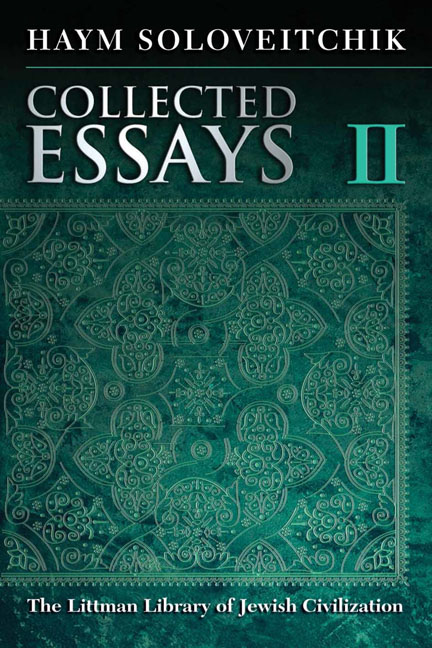Book contents
- Frontmatter
- Dedication
- Preface
- Acknowledgments
- Contents
- Note on Transliteration and Conventions Used in the Text
- PART I RE-EVALUATION OF ELEVENTH-CENTURY ASHKENAZ
- PART II MARTYRDOM UNDER CROSS AND CRESCENT INTRODUCTION
- PART III MISHNEH TORAH
- Bibliography of Manuscripts
- Source Acknowledgments
- Index of Names
- Index of Places
- Index of Subjects
12 - Maimonides’ Iggeret ha-Shemad: Law and Rhetoric
- Frontmatter
- Dedication
- Preface
- Acknowledgments
- Contents
- Note on Transliteration and Conventions Used in the Text
- PART I RE-EVALUATION OF ELEVENTH-CENTURY ASHKENAZ
- PART II MARTYRDOM UNDER CROSS AND CRESCENT INTRODUCTION
- PART III MISHNEH TORAH
- Bibliography of Manuscripts
- Source Acknowledgments
- Index of Names
- Index of Places
- Index of Subjects
Summary
I PUBLISHED part of my BA Honors thesis some twenty years after it was written, in a rabbinical jubilee volume that took so long to be printed that it turned into a memorial volume. Though respectfully buried, the article had a surprising afterlife, generating more comment—mostly negative—than anything else that I have written. The numerous criticisms are available on my website; my replies to them follow on the heels of the essay.
|281|
THIS WAS MY FIRST VENTURE in Jewish studies many years ago and was cast, understandably enough, in a somewhat tosafist mold. Were I to write it now, I would perhaps drop the two-section format of question and answer and opt for an integrated contextual approach. Not only would the questions be posed less stridently, but an attempt would also be made to show the peculiar interplay between the halakhist and rhetorician at work in Iggeret ha-Shemad. Nevertheless, I stand now as then by the contention of the essay as to the nature of Maimonides’ letter, and I offer it, with its youthful exuberance, in tribute to one who, while ripe in years, remains young in spirit.
Law
THE MOROCCAN JEWS had been under persecution for well over a decade when Maimonides arrived in Fez in or around the year 1159. The |282| same religious fanatics who had driven him from his native Córdoba and set him on his decade of wandering held sway over North Africa. The Almohads, as these disciples of Ibn Tumrat were called, sought a society of true believers only which left no room for infidels. The inhabitants of the lands that they seized were given, in effect, the choice between Islam, exile, or death. Some Jews suffered martyrdom, others fled, but most simply repeated the shahada after the soldiers—‘There is no God but Allah, and Muhammad is the prophet of Allah’—and attempted to maintain their religion in the secrecy of their homes.
Some time after Maimonides’ arrival a letter was widely circulated in the Moroccan community and caused great consternation among the Marranos. It seemed that someone had inquired of a scholar outside the Almohad rule how one should conduct oneself in this time of persecution. The reply was harsh and unequivocal: Islam was a form of idolatry and thus came under the imperative of martyrdom.
- Type
- Chapter
- Information
- Collected EssaysVolume II, pp. 288 - 330Publisher: Liverpool University PressPrint publication year: 2014



